Search Images
Browse Content (p. 1276)
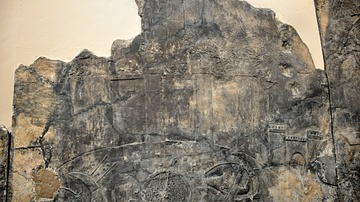
Image
The City of -alammu
This relief is part of a larger sequence showing the Assyrian military campaign and attack on the city of -alammu. The city gate, wall, and towers are shown here; the towers are occupied by soldiers trying to defend their city against the...
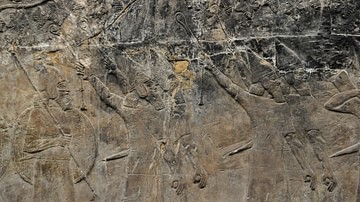
Image
Assyrian Slingers Attacking the City of -alammu
Assyrian relief depicting a siege, from Room XIV, the South-West Palace at Nineveh, Mesopotamia, modern-day Iraq, Neo-Assyrian Empire, reign of Sennacherib, 700-692 BCE. The attack starts with slingers hurling stones towards the enemy at...

Image
Phoenician-Assyrian Warship
This gypsum wall relief depicts a warship. This ship was built and manned by Phoenicians employed by Sennacherib. It is a bireme, with two rows of oars. Shields are fastened around the superstructure, as on the fortifications of some city...
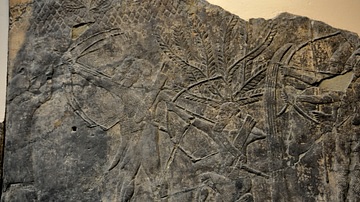
Image
Assyrian Soldiers Attacking the City of -alammu
This gypsum wall relief depicts part of the Assyrian attacking wave on the city of -alammu. Archers shoot at the town. Spearmen (left) work their way towards the walls. The name of the city was inscribed completely, but only the last part...
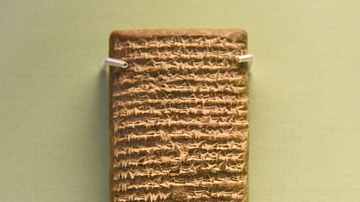
Image
A Royal Assyrian Letter
This clay tablet is a letter from Shamash-shum-ukin, the Assyrian crown prince of Babylon, to his father Esarhaddon, the king of Assyria. It concerns treasonable activities in Babylonia. Circa 670 BCE. From Nineveh, Mesopotamia, modern-day...
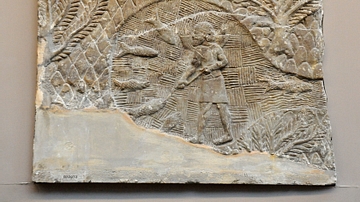
Image
Assyrian Fisherman
This alabaster bas-relief depicts a man fishing in a mountain pool or pond. Neo-Assyrian Period, reign of Sennacherib, 700-692 BCE. From Room XLIV (LL) of the South-West Palace at Nineveh (Kouyunjik), Mesopotamia, modern-day Iraq. (British...
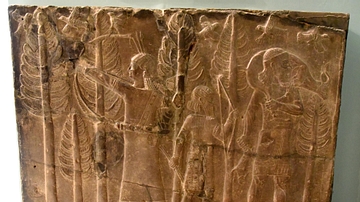
Image
Hunting Scene from Khorsabad
This unusual scene (in black stone) came from a detached building on the private side of the palace, possibly reserved for royal use. It was one of the few discoveries made at Khorsabad by Henry Layard. Neo-Assyrian Period, reign of Sargon...

Image
Tablet V of the Epic of Gilgamesh
This is the reverse side of the newly discovered tablet V of the Epic of Gilgamesh. Old-Babylonian Period, 2003-1595 BCE. From Southern Mesopotamia, modern-day Iraq. Currently housed in the Sulaymaniyah Museum, Iraqi Kurdistan.

Image
Phoenician Bronze Bowl from Nimrud
Over 150 bronze bowls were found in a palace at the city of Nimrud. These bowls were made in Phoenicia (modern-day Lebanese and Syrian coasts), and were brought to Nimrud as tribute or booty by one of the kings who campaigned in the west...
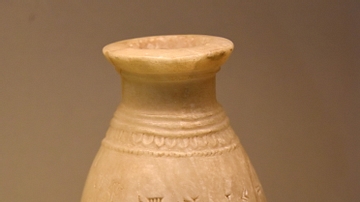
Image
Alabaster Jar of Sargon II
The cuneiform inscription on this alabaster vessel mentions that it belongs to king Sargon II. Neo-Assyrian Period, reign of Sargon II, 721-705 BCE. From the North-West Palace at Nimrud, Northern Mesopotamia, modern-day Iraq. (British Museum...